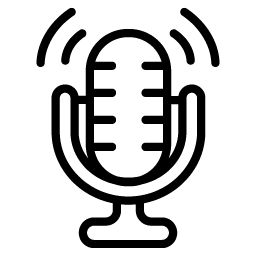
Think back to the last time you had to communicate in the moment with little to no preparation. An unexpected question that came up at the end of a meeting. Chitchat with your boss’s boss in the elevator. Feedback for your colleague at the end of a virtual meeting. Now, review how it went. Were you able to shine or did you deliver a lackluster response?
For most of my life, I’ve been on the front lines of spontaneous speaking. Based on my last name (Abrahams), I occupied the alphabetical hot seat in school. Going first in elementary school show-and-tell and solving high school algebraic equations at the board provided me ample practice to become more comfortable and confident in my impromptu speaking.
Years later, this skill was called to good use when the deans of Stanford University’s Graduate School of Business, where I teach strategic communication, asked me to solve a pressing problem. Our talented and prepared Master of Business Administration (MBA) students were freezing when placed on the spot with cold-call questions from their professors. To address this need, I created a methodology to help anyone—including MBA students—improve spontaneous communication.
As outlined in my book Think Faster, Talk Smarter: How to Speak Successfully When You’re Put on the Spot, honing our speaking on the spot requires us to focus on both our mindset and our messages.

In this Toastmasters Podcast episode, the co-hosts speak with Matt Abrahams, who shares two critical elements of spontaneous speaking.
Mindset
Step 1: Manage anxiety.
Most people get nervous when speaking in front of or to others, complete with a racing heart, sweaty palms, and dry mouth—and it often gets worse when called on unexpectedly. Fortunately, you can manage your anxiety by focusing on your physical response.
First, take deep belly breaths, filling your lower abdomen, making sure to exhale twice as long as the inhale. Next, channel your natural adrenaline by using big, broad gestures and step forward toward your audience. Third, hold something cold in the palms of your hands, which serve as thermoregulators for your body in order to reduce your elevated body temperature brought about by your increased blood pressure.
Step 2: Adjust your approach.
High expectations can make spontaneous speaking more difficult by increasing performance anxiety. Lessen the stress by reminding yourself that there is no one “right” way to communicate. I advise my students and coaching clients to follow the improv maxim: “Dare to be dull.” Instead of trying to blow away someone, seek simply to get the job done. Reducing pressure actually frees you to communicate in a more relaxed and authentic manner.
Another suggestion comes by way of over 100 communication experts whom I have interviewed on Think Fast Talk Smart: The Podcast—be in service of your audience or person you’re speaking to. In other words, it’s not about you. Remembering this should relieve some of the pressure to be “right,” and allow you to focus more on collaborating and building understanding with those you’re speaking to whether onstage or in a meeting. Try invoking a mantra before you speak that reminds you that your message has value, such as, “I have value to bring.”
Step 3: Appreciate what is needed.
Spontaneous speaking can seem like a test or challenge, which can put you on the defensive, leading to a curt tone and brief answers. But what if you saw impromptu speaking as an opportunity to collaborate with others to further knowledge and understanding? This simple shift can help you serve the people you’re talking to by seeking common ground and connection, especially if you’re facing an audience of one.
Imagine you and a colleague are leaving a tense meeting. Your colleague turns to you and asks, “How did I do in there?” If you’re just listening superficially, you might point out a few of your colleague’s missteps that could be addressed. However, if you had listened to your colleague more completely—noticing inflection, pace, and nonverbal cues—you might realize his query was really a request for support and encouragement, not a request for feedback. By missing the nuance, you might have worsened your colleague’s mood and potentially damaged your relationship.
To listen in a more focused manner, slow yourself down and become more present in meetings, in conversations, and onstage. Take a deep breath and get yourself into a mental state where you can be engaged and curious. This shifts you from defense to being more receptive and open, and leads to better understanding.
Message
Step 4: Structure your message.
With the right mindset in place, you can now focus on your message. The brain does not respond well to long lists and rambling responses and prefers structured, logical ordering of information. My favorite tool for organizing spontaneous messages—be it answers to questions, feedback, or even small talk contributions—is to leverage the “What? So what? Now what?” structure. In this structure, begin by describing what it is you’re saying (your answer, your feedback, your contribution). Next, explain why your response is relevant and important to your audience. Finally, introduce next steps and actions. For example, if I were answering interview questions about my approach to speech coaching, I might say:
Honing our speaking on the spot requires us to focus on both our mindset and our messages.
“[What?] I believe in providing foundational principles and specific action steps to those I teach and coach. [So what?] In providing a little theory behind my tactical guidance, the people I work with better appreciate and remember the advice I give. [Now what?] If I were to work with you, then I would immediately begin by exploring the specific communication needs of your employees.”
Getting comfortable with any communication structure requires practice. A great way to get your reps in for this structure is to ask yourself, What? So what? Now what? after reading an email, article, or other document. Drilling this technique makes it easier to deploy in the moment.
Step 5: Focus your content.
A sure way to turn off your audience is by rambling or going on too long. During an unnecessarily long communication, who among us hasn’t looked longingly at the door during a presentation or at our watch during a one-on-one meeting? A simple focusing tool is quickly defining your goal for any impromptu communication using the “Know, Feel, Do,” framework. First, what do you want your audience to know about your topic? Next, how do you want them to feel as a result? And finally, what do you want them to do?
Framing your goal in this manner helps you prioritize your content and your thinking. For instance, my goal for this article is for you to know specific best practices for speaking on the spot. I want you to feel confident and excited about using these strategies the next time you find yourself speaking spontaneously. And finally, here’s what I want you to do: Use some of these best practices the next time you speak in the moment (e.g., during Table Topics®).
Another focusing mechanism is to consider the language you use. Avoid using acronyms, jargon, and terminology that get in the way of others clearly understanding what you’re trying to communicate. As you talk, remind yourself that you suffer from the “curse of knowledge.” In other words, you know way more about your subject matter than whoever you’re speaking to. Your audience does not possess the same level of insight and information as you have. The antidote to this curse of knowledge is empathy. Think about your terms and lexicon to help you make your content accessible and focused.
Taken together, these tools for mindset and messages can help you become a better in-the-moment communicator. It takes repetition, reflection, and feedback to think faster and talk smarter, but by leveraging your Toastmasters experience and these suggestions, you have all the ingredients you need for a spontaneous speaking success.
Matt Abrahams is a lecturer at Stanford Graduate School of Business, the author of Think Faster, Talk Smarter: How to Speak Successfully When You're Put on the Spot and Speaking Up Without Freaking Out. He also hosts Think Fast, Talk Smart: The Podcast.
Related Articles

Table Topics
Spontaneous Speaking

Communication
Be Confident When Called On

Communication



 Previous
Previous

 Previous Article
Previous Article